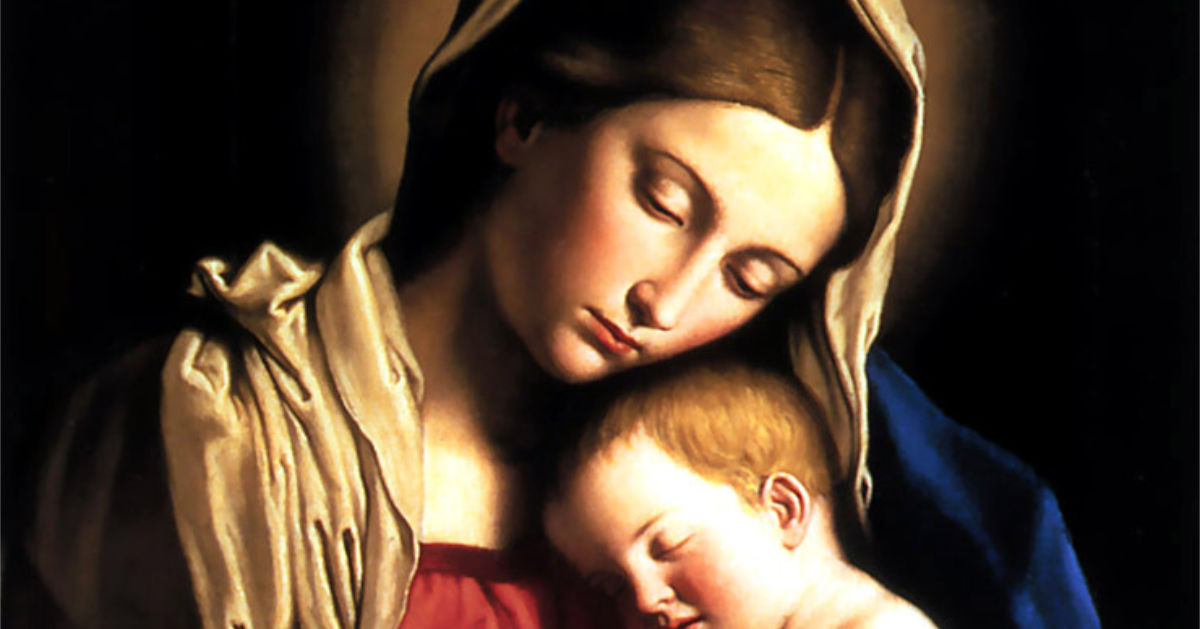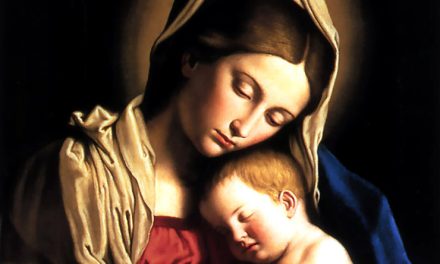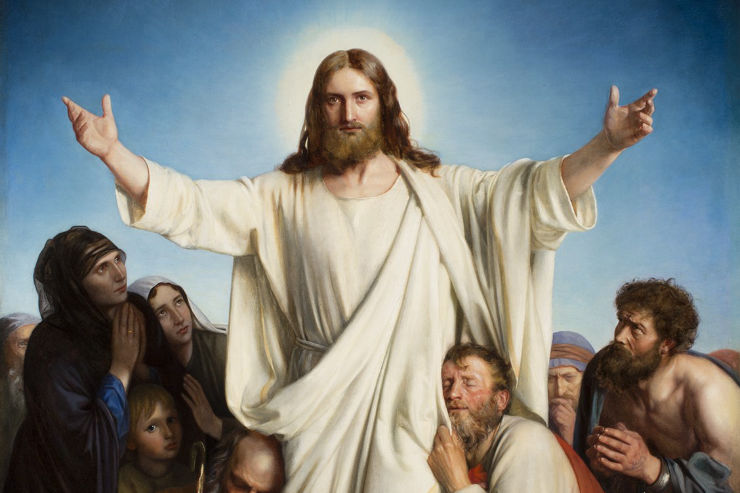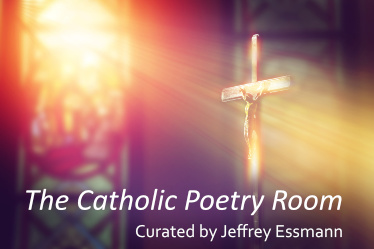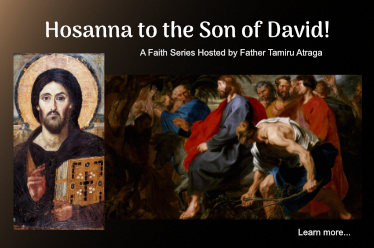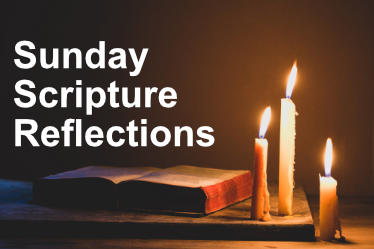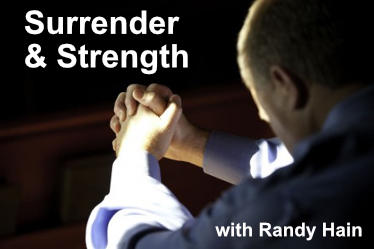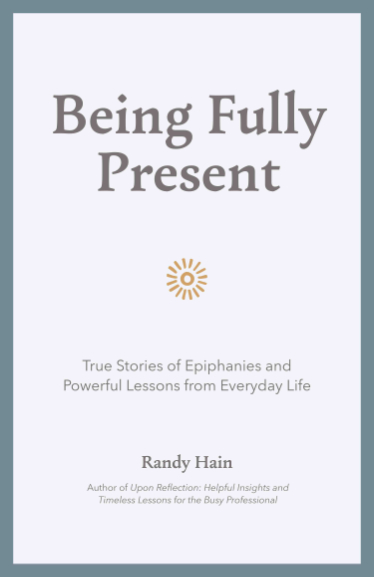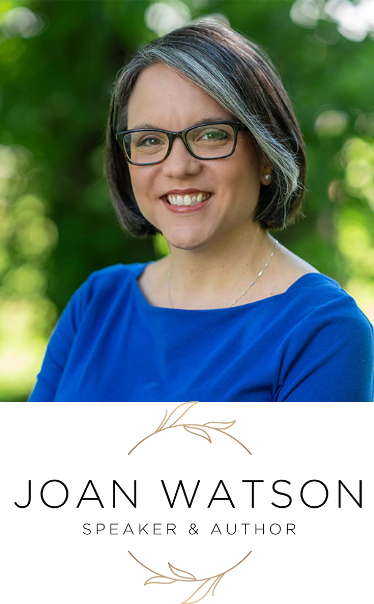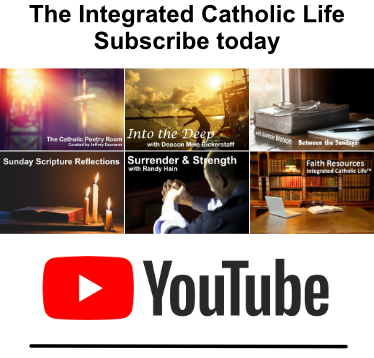“When I pray a rosary, I spend time with Mary, reflecting on the life of her son through her eyes. There is a peace and reassurance that comes from being with the mother of my Lord.”
Today we celebrate Mary as the Mother of God.
As a deacon, I probably receive more comments and questions from our non-Catholic brothers and sisters about the Church’s Marian teachings than just about any other topic. Right up there with questions about Jesus, prayer, and salvation.
I usually respond first with the words of Fulton Sheen:
“We don’t start with Mary, but with her Son. Jesus, we adore and worship, Mary, we venerate because of who her son is and the example of faith she lived and what learning about her can teach us about her Son and how to be his disciple.”
Each of the four major teachings about Mary teaches us more about her son than they do about Mary. They are centered on Christ.
This is not to say our attention or devotion to the Blessed Mother should be diminished—it shouldn’t be—but the point is to understand the motivation of the Church to formalize these teachings which are a part of the Deposit of Faith.
So, let’s look at what today’s celebration teaches about Jesus.
CHRISTOLOGICAL HERESIES
From the beginning, the Church has had answer questions and even counter erroneous teachings concerning Jesus. These questions are generally centered on the person and nature of Jesus—questions concerning who and what Jesus is.
- Is Jesus truly human?
- Is Jesus truly Divine?
- Is Jesus both truly and fully human and Divine?
Some people denied Christ’s humanity – They taught that Jesus was not human at all, that he had only an apparent body or that the body he wore came from heaven and not from Mary (mankind). Others denied that He possessed a human soul.
Some people denied Christ’s Divinity – They rejected the teaching of the Church that Jesus was truly God or reduced Him to either an apparition or an enlightened mediator somewhere between God and man.
Arianism, which denied the Divinity of Christ, was far-reaching in both number of adherents and in years it persisted (a span of three centuries).
Still others denied that Christ is one person – They accepted in some fashion that Jesus is both God and man but denied these two natures were united in a single person.
Nestorianism, effectively, if not explicitly, divided Christ into two persons, one human and one divine.
For example, some erroneously argued that when Jesus became hungry or tired… when he felt pain… that was the man; but when He healed the sick, restored sight, raised people from the dead… that was God. To these people, it was only a man who died on the Cross.
Nestorius erroneously taught that while Mary was certainly the mother of the man (Jesus), she could not be the mother of the Logos (God).
JESUS IS TRUE GOD AND TRUE MAN
Yet, from the earliest of times, Mary had been proclaimed by the faithful as Theotokos, God-bearer, or Mother of God.
The Apostle’s Creed states, in part, “I believe in God, the Father Almighty, Creator of heaven and earth; and in Jesus Christ, His only Son, our Lord: Who was conceived by the Holy Spirit, born of the Virgin Mary.” The prologue of John’s Gospel states, in part, “In the beginning was the Word, and the Word was with God, and the Word was God.”
There is only one Son, Jesus, the eternal Logos—the Second Person of the Blessed Trinity—in Whom are joined two natures, one Divine (Spirit) and one human (body and soul).
He was conceived (His Incarnation) and born in time and of Mary who is His mother, for mothers are mothers of persons, not mothers of natures. Mary bore the Logos, the Second Person of the Blessed Trinity, according to His humanity.
These are the truths taught and defended at the Council of Ephesus, in A.D. 431. The Council condemned the teaching of Nestorius and formally proclaimed Mary as Mother of God.
Mary, a true mother, was and is the mother of that one, single Divine Person and is thus to be acknowledged as the Mother of God. This teaching was proclaimed to ensure that the Dogmas concerning the identity and nature of Christ are clearly understood.
Mary does not pre-date God, she is His creature. But she does pre-date God’s Incarnation in Jesus Christ. And since Jesus is not two people, but one Divine Person, she is rightly referred to as the mother of that person—The Mother of God.
And that makes clear that her one son is fully God and fully Man.
This is what we celebrate and give thanks for at our Eucharist today.
PERSONAL REFLECTION
Mary plays an important role in my spiritual life and I hope she does in yours too. She keeps me grounded, pointed in the right direction.
When I pray a rosary, I spend time with Mary, reflecting on the life of her son through her eyes. There is a peace and reassurance that comes from being with the mother of my Lord.
Pope Benedict XVI’s writings and witness have been a significant part of my spiritual growth over the last forty years. Regarding Mary and the prayers and mysteries of the Rosary, he wrote, “They touch you in a meditative way, so that the repetition allows the soul to settle into tranquility and, holding fast to the Word, above all to the figure of Mary and to the images of Christ that pass you by, make your soul calm and free, and grant it a vision of God” (Pope Benedict XVI, God and the World, Peter Seewald, 2002).
As is the case with most anyone, there are times when my prayer life is not what it should be… when my priorities get out of kilter… when the faith I profess and the life I live are not as aligned as they should be. In those times, particularly, I go to Mary in prayer and ask for the grace to more deeply know and love her Son. I pray that by her example, I might more fully say yes to the Lord.
Here is something to reflect on: Jesus, who is God, is the only natural-born son who chose His mother before his conception.
He had a plan for her life, and she accepted it with her fiat; her yes given to the Archangel Gabriel at the Annunciation.
He also has a plan for your life. Follow our Blessed Mother’s example and say yes to her son.
Let me close with these words from Pope Benedict XVI at the conclusion of his first encyclical in 2005, Deus caritas est:
“Holy Mary, Mother of God,
you have given the world its true light,
Jesus, your Son – the Son of God.
You abandoned yourself completely
to God’s call
and thus became a wellspring
of the goodness which flows forth from him.
Show us Jesus. Lead us to him.
Teach us to know and love him,
so that we too can become
capable of true love
and be fountains of living water
in the midst of a thirsting world.”
Into the deep…
The readings at Mass for Christmastide—The Octave Day of Christmas: The Solemnity of the Blessed Virgin Mary, the Mother of God are Numbers 6:22-27 | Psalms 67:2-3, 5, 6, 8 | Galatians 4:4-7 | Luke 2:16-21
Image credit: “Madonna and Child” (detail) by Sassoferrato | Restored Traditions
Follow @dcnmikebickPlease help spread the Gospel. Share Deacon Bickerstaff’s post with family and friends on Facebook and other social media.
Thank you for your much needed financial support and prayers…
We welcome both one-time and monthly donations. A monthly subscriber giving just $10 a month will help cover the cost of operating Integrated Catholic Life for one day! Please help us bring enriching and inspiring Catholic content to readers around the world by giving today. Thank you and may God Bless you for supporting the work of Integrated Catholic Life!

